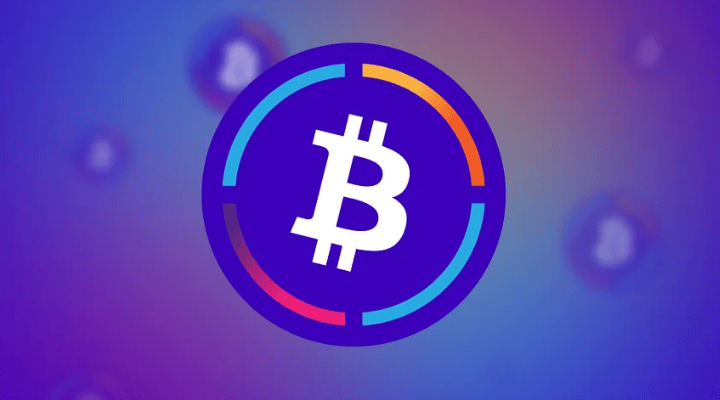The fundamentals of staking will be covered in detail here. What exactly is staking? How does it work? As an investor, what do you need to know to get started with staking? We hope that after reading this paper you will be ready to begin your staking journey with us.
Before we begin, familiarize yourself with the following terms:
When it comes to blockchains, a “validator” is the person in charge of checking that all transactions are legitimate.
Network = Cosmos, Ethereum, or any other blockchain
The term “consensus mechanism” refers to any algorithmic process through which all nodes in a blockchain can come to a unanimous decision.
1) What is staking?
Depending on the level of understanding you wish to gain, staking can be easy or complex. The most important takeaway from Staking is that it is a method for collecting passive income on any cryptocurrency that operates on a blockchain that employs a proof-of-stake consensus process, such as Cosmos or Ethereum. Staking is distinct from Bitcoin’s core operation, mining. Mining is extremely energy-intensive, but staking is 99.5% less so. In the end, though, they both serve the same purpose: to validate and verify transactions on a blockchain. In this section, we will discuss all of the essential principles of staking.
Proof of Work vs. Proof of Stake (simplified)
Proof of Work
Bitcoin was the first digital currency to use this system, and mining is the primary means by which network transactions are verified. In order to decipher the encryption, all miners in the network compete for resources (electricity). The network compensates those that verify transactions by giving them a portion of the bitcoin generated.
Proof of Stake
An algorithm that has the same goal as “Proof of Work” but uses a different method to get there. Unlike in mining, the person who validates the next block is chosen at random from a group of users who have staked some of that cryptocurrency. The node gets the fees for the transactions it validated and gives them out fairly (to the stakers) as a reward.
2) What is a “proof of stake” consensus mechanism?
Here is where the discussion becomes rather technical, but it is essential to grasp the distinction between Proof of Work and Proof of Stake. Blockchains are supposed to be decentralized, so there is no need for a single authority to run the show. How does this work without a bank or credit card company to make sure that all the information is correct? A consensus process is utilized. A “consensus mechanism” refers to a computational “technique” employed in a blockchain to establish agreement, trust, and security. Proof of Work (Bitcoin) and Proof of Stake (Ethereum, Cosmos, etc.) are the two most used "methods."
Numerous networks employ Proof of work as a strategy or consensus mechanism. In a proof-of-work blockchain, a large number of computers run software capable of solving complex mathematical computations, such as confirming a transaction between two strangers and ensuring that no one attempts to spend the same amount of money twice. This group is known as “miners.” In exchange for competing to solve this puzzle and uploading the most recent transactions to the blockchain, miners receive cryptocurrency as a “reward.” Obviously, the more people who use the network, the harder it is to solve these math problems. This means that each miner needs to use more energy, which makes the system very energy-intensive and expensive to run as competition increases.
Consequently, a more recent consensus technique, “Proof of Stake” has arisen to solve this problem. The fundamental distinction is that instead of all those miners competing with energy as their source of “proof” of participation, people who have invested in the blockchain use their money as their source of “proof” of participation. But how is that executed? Let’s explore the section that follows.
3) How does staking work?
Two things are required in order to complete a staking operation:
1) A sum of money in the form of a cryptocurrency using proof of stake
2) Appropriate software and hardware for the staking process.
Example:
Number one is you, the investor, who invests $1,000 in Osmosis and receives their OSMO token in exchange. The second validator is the Beehive Validator, which utilizes the necessary software and hardware to communicate with the Osmosis Blockchain. You, as an investor, have the capital, and we, as a staking service, have the expertise and software required to function on a blockchain.
Then, we reach an agreement that allows us, as the staking service, to utilize your funds as “proof” to perform staking operations on the blockchain and validate transactions, in exchange for giving you, the investor, staking incentives for your participation. In this scenario, we are business partners completing a task on a blockchain for which we receive incentives as compensation. Then, we distribute this incentive in accordance with our arrangement. That is all!
Staking performs a similar role to mining in that it is a procedure by which a blockchain participant (we as business partners and “validators”) is picked to add the latest transactions to the blockchain and, in exchange, earn some cryptocurrency, i.e., staking rewards. A proof-of-stake blockchain selects members based on the level of their stake (how much money is “at stake”) and the duration of their participation.
4) What are the advantages of staking?
Consider having funds in an account for savings. Which do you favor? Would you rather have the money stay in a bank account and collect dust or put it to work and earn a return? The ultimate step is staking. Instead of letting their crypto assets collect dust in a wallet, many crypto investors employ staking to put their assets to work by earning a yield, i.e., staking rewards. You have already selected to invest in a certain blockchain project, so why not earn income while you are invested?
Staking also contributes to the security and efficiency of a blockchain, which is an additional benefit. By staking your funds, you actually make the blockchain more resistant to attacks since the larger the stake in a blockchain, the more difficult it is to manipulate the blockchain; therefore, by staking your assets, you secure your own investment.
5) What are the risks?
When investing money in something, it is crucial to always be aware of the associated risks and conduct thorough research. This rule of thumb applies to staking as well. Here are a few of the most significant factors to consider when engaging in staking:
1) Staking frequently necessitates a time-bound lockup of your assets. This indicates that your funds are locked for the purpose of staking and cannot be transferred until the lockup period has expired. Lockup periods vary from blockchain to blockchain, ranging from 7 to 28 days. The disadvantage may be that you will be unable to sell your funds even if the market undergoes a significant move, therefore missing an opportunity to sell while your assets are locked.
2) Staking benefits are determined by an annual percentage yield (APY), which varies from blockchain to blockchain and tends to fluctuate over time. This means that a set APY is not guaranteed on your staking allocation. Staking incentives are always paid in the network’s native coin. For instance, when investing in Osmosis or Evmos, your staking rewards and thus the APY on your investment will always be paid in OSMO or EVMOS tokens, the native tokens for Osmosis and Evmos chains, which you used to acquire access to staking in the first place. Due to the volatile nature of cryptocurrencies, price declines may overshadow the benefits you obtain. If the investor intends to hold the asset for a longer period of time, regardless of volatility, they will usually choose to stake.
3) Could I lose money? Theoretically, you run the risk of losing a portion of your money. The risk, however, is extremely minimal. How should we interpret this?
Your money never leaves your wallet when staking with Beehive. This implies that we never have physical possession of stakers funds and so cannot control, steal, or lose them. They stay safe with you. In contrast, when you participate in staking, you authorize the staking provider to spend your funds for staking on your behalf. Delegation is a cryptographic operation. In doing so, you expose yourself to counter-party risk, as you are dependent on the staking service to facilitate the staking operation. If the staking service, or validator, as they are also known, does not perform their duties correctly, they risk being fined (slashed) and losing a portion of their stake.
This could occur if a power outage causes the staking services to be inaccessible for a time. Such an event may result in a penalty and the possibility of losing a portion of the staked funds. Therefore, you should carefully analyze the staking service to determine whether or not it can be trusted and how it performs.
Conclusion
You have learned from reading this article that staking is a way to put your crypto assets to work and earn a passive income known as staking rewards. You have also learned that staking is a method for verifying transactions and enhancing the security of a proof-of-stake network. You are aware that proof of stake is a consensus mechanism, which refers to a computational process for achieving consensus on a blockchain network. You should have also understood some of the benefits and risks of participating in staking. Therefore, we would claim that you have sufficient knowledge and are well-equipped to begin your journey as a stakeholder.

 English
English
 Deutch
Deutch
 Espanol
Espanol
 Francais
Francais
 Portugues
Portugues
 日本
日本
 한국인
한국인
 Türk
Türk
 Русский
Русский
 Tiếng Việt
Tiếng Việt

